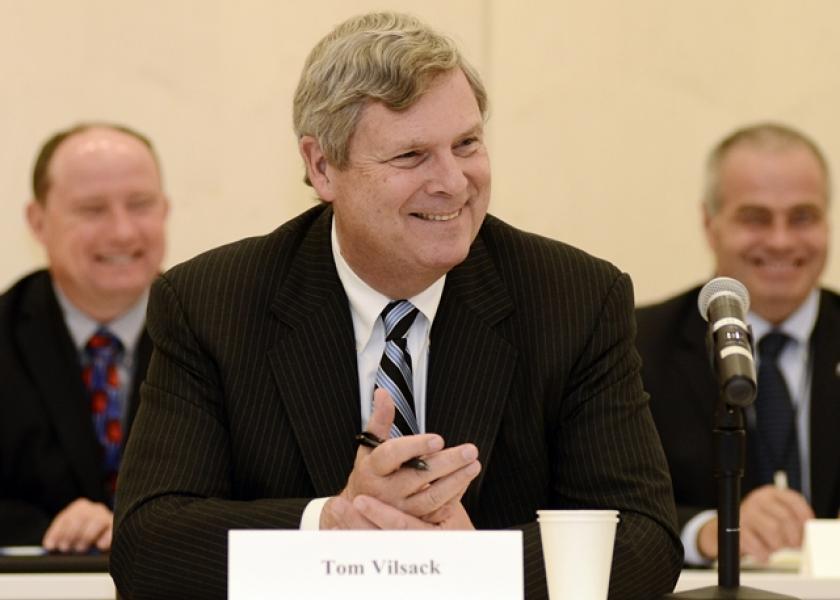Vilsack Could Unveil His Climate, CCC Plans During Tuesday’s Hearing

AS USDA reviews the previous administration’s plans for the remaining CFAP money, Tom Vilsack, President Biden’s pick to lead USDA, will help spearhead those efforts. And we could learn more about future plans for the Commodity Credit Corporation—or CCC—as early as Tuesday.
Vilsack’s confirmation hearing is scheduled to take place with the Senate Ag Committee Tuesday morning. The CCC was a tool the previous administration used to distribute tariff aid and coronavirus relief payments to producers. But it’s a tool Vilsack didn’t have at his disposal under the Obama Administration. One Washington insider thinks Vilsack may detail all the tools he plans to use if confirmed, including CCC.
“I think you will hear about that when he gets confirmed in the Senate. I think he'll probably talk about utilizing all of the tools at his disposal,” says Karla Theiman of the Russell Group.
Thieman thinks Vilsack’s top two priorities will be COVID recovery and addressing climate smart farming practices, both of which he may get creative in tapping into CCC.
“The big-ticket item is going to be paying farmers for those practices that sequester carbon or avoid admittance of greenhouse gases. The ccc is set up to do that,” Theiman says. “There are not some of the restrictions on the CCC that were previously when he was secretary, so that he can have the ability to actually utilize the CCC as a tool to help pay farmers for those practices.”
While climate plans seem to be the buzz right now, Thieman says you can’t forget the hurdles agriculture faces in COVID-19 recovery. And considering his previous eight years as Secretary of Agriculture, Theiman thinks he knows how USDA works, and will be creative in how he decides to fully utilize USDA’s resources.
“There is no other federal agency that has a presence in every single county of the United States in the way that USDA does through FSA, NRCS and rural development that can be used for vaccine sites, education or creating partnerships with the private sector,” adds Theiman. “So, I think he's going to really know what all of those resources are on day one, and leverage and use those resources to make sure we are getting vaccines out to rural communities adequately.”
Thieman says Vilsack’s unique knowledge of USDA’s broad presence will apply to more than just farmers and ranchers, but also the food availability side of USDA’s responsibilities.
“There is a hunger crisis happening at the same time,” says Theiman. “I know that’s something former Secretary Purdue was working on, as well, through the food box program. I think Tom Vilsack is going to double down and try to figure out what can we do to help those who are food insecure during this time.”
The push to get Vilsack’s nomination pushed through is something backed by several agricultural groups. A coalition of 130 ag groups, including the American Farm Bureau Federation (AFBF), sent a letter to the Senate Agriculture Committee in January calling for a swift nomination process.
“It took a long time to get our last secretary in place and that just puts agriculture at a handicap,” says Zippy Duvall, AFBF president. “We're going through so much in agriculture today. There's so many challenges and opportunities out there for them to go ahead and get Mr. Vilsack seated. He's been there eight years under the Obama administration. If anything, he's even learned more since he was with the U.S. Dairy Export Council. He has a different appreciation for trade. So if anything, he's even more qualified than he was, and he's always been a very qualified candidate in that position.
Vilsack’s nomination hearing with the Senate Agriculture Committee Tuesday, Feb. 2, at 10:30 a.m. ET.








